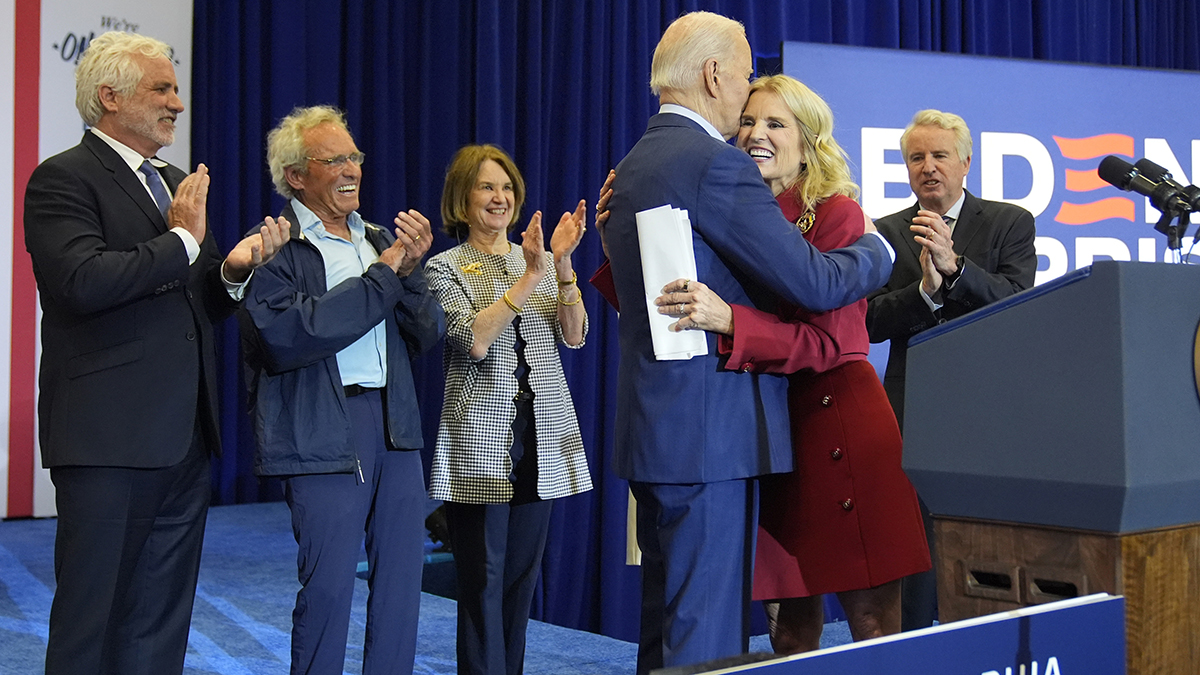His symptoms started in late January 2012, when Kim W. Pace experienced an odd sensation of heat in his lips and nostrils. Eventually the heat became a burning and progressed to his lips and gums, the area near his left eye, and his teeth.
WATCH: Working Out Kinks in ACA Website
"It was 24/7. The only time I didn't feel it was when I was sleeping,'' Pace said, reflecting on a long, pain-filled journey that ultimately led to a diagnosis of trigeminal neuralgia _ a disorder of the trigeminal nerve, which is the largest cranial nerve _ and to surgery at Johns Hopkins Hospital in Baltimore.
"I'm not looking for pity. This is not about me. It's about helping others get medical attention,'' said Pace, 61, a senior financial consultant from Jenkins Township. "I just want to raise awareness.''
At first Pace and his wife, Carol, a registered nurse, found everyone they consulted from their family physician to emergency-room personnel seemed unaware that trigeminal neuralgia was a possibility.
Perhaps the pain was a reaction to medication Pace had been taking, one suggested. Perhaps it was severe acid reflux. Perhaps this was a case of an addict looking for a strong prescription. That last theory stung.
Perhaps, a doctor told Pace, this was all in his head.
Local
Breaking news and the stories that matter to your neighborhood.
Actually, it was in his head _ but not psychosomatically. The pain was real, and all sorts of triggers, from exercise to trying to shave to feeling a breeze on his face, made it worse.
"Walking up the steps, I was in agony,'' Pace said. "I didn't brush my teeth for two months. Taking a sip of water or a bite of food sent the pain off the charts."
"I would try to feed him a spoonful of peanut butter,'' Carol Pace said, shaking her head. ``He lost 40 pounds between April and July.''
"Don't ever let anybody tell you you don't have pain,'' Pace said, comparing what he felt to a series of "electrical shocks or electrocution.''
Migraine headaches became a frequent occurrence, and then one day he thought he was having a stroke _ but he went to the hospital and found that wasn't the case.
Finally, the tide began to turn when Carol Pace mentioned her husband's symptoms to fellow students at a yoga class.
"That sounds like what my grandmother had,'' one woman told her. "They used to call it tic douloureux.''
"That's a very old name for it. It's even mentioned in `Moby Dick,' " Carol Pace said, remembering how she berated herself for not making a connection between the burning sensation and a nerve.
The Paces went to the University of Pennsylvania Hospital, where a resident almost immediately suggested trigeminal neuralgia. But it was only a suspicion at that point. MRIs were inconclusive and the staff at Penn didn't want to operate. They hoped anti-seizure medication and pain-relief medication would help.
But even morphine didn't help for long, Pace said.
By summer 2012 the Paces discovered in an online search that Johns Hopkins had a team dedicated to trigeminal neuralgia. They contacted the Baltimore hospital, and Pace was amazed, a few hours later, to get a phone call from a physicians assistant named Carol James who asked if they could have a conversation.
"She was like their triage person,'' Pace said. "She talked to me for half an hour, and I didn't realize it but she was evaluating me.''
Later, he said, James told him, "We don't just look at MRIs. We listen to the patient, and you hit every keyword and phrase.''
Dr. Michael Lim would be able to help him, James assured the Paces.
"When we saw him, he looked like he was about 15 years old,'' Kim Pace said, admitting that was a little frightening at first. But the Paces soon felt confident in Lim, who operated on Pace's trigeminal nerve on Aug. 10, 2012.
During four hours of delicate brain surgery, known as microvascular decompression surgery, or MVD for short, Lim discovered two arteries had tangled themselves around Pace's trigeminal nerve and the nerve's protective myelin sheath had been worn away.
Without the myelin protection, Pace said, his trigeminal nerve was like an electrical cord from which the plastic coating has been worn off, leaving bare wires exposed.
The surgeon, who gave the nerve a "Teflon'' coating to replace the myelin, said it was one of the worst cases he had ever seen, "and people from all over the world come to him,'' Pace said, explaining there are two types of trigeminal neuralgia, and he had a rare combination of the two.
In the aftermath of the surgery, Pace said, his pain is gone. He does still feel some discomfort in his lip, but "that's more of an annoyance than pain.''
When the pain was at its worst, he said, it's hard to describe it to those who never experienced it.
"I've heard shingles is very painful,'' he said, "and I don't want to make light of anyone's pain, but I asked (James) how this pain compared to the pain of shingles, and she said there's no comparison.''
Trigeminal neuralgia is sometimes called ``the suicide disease,'' because some sufferers want to kill themselves.
"It never crossed my mind,'' to do that, Pace said, but he did at one pre-diagnosis point feel so weak he expected to starve to death. Dealing with the pain changed his personality, he said, blinking away tears as he recalled being less than pleasant to his wife, daughter and son-in-law.
The exact cause of the disorder is mysterious, though some believe a blow to the head could set things in motion.
He did suffer several concussions decades ago, during his high-school football career, Pace said, adding he doesn't know if that had anything to do with his condition.
Glad as he is to be free of the constant pain, Pace wants to spread awareness about the disease, to which next Monday has been dedicated as International Trigeminal Neuralgia Day.
"I promised myself that if I lived through this I would make it my goal to help everyone I can.''



